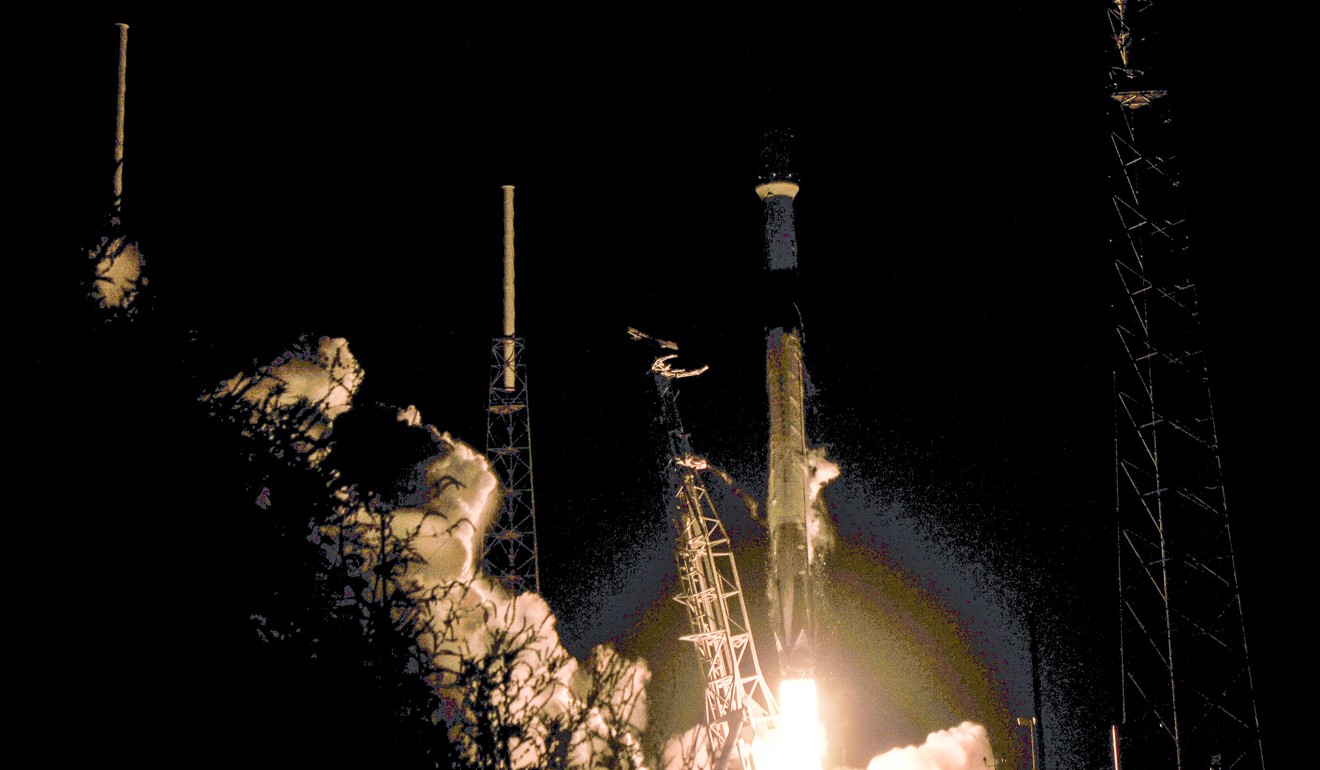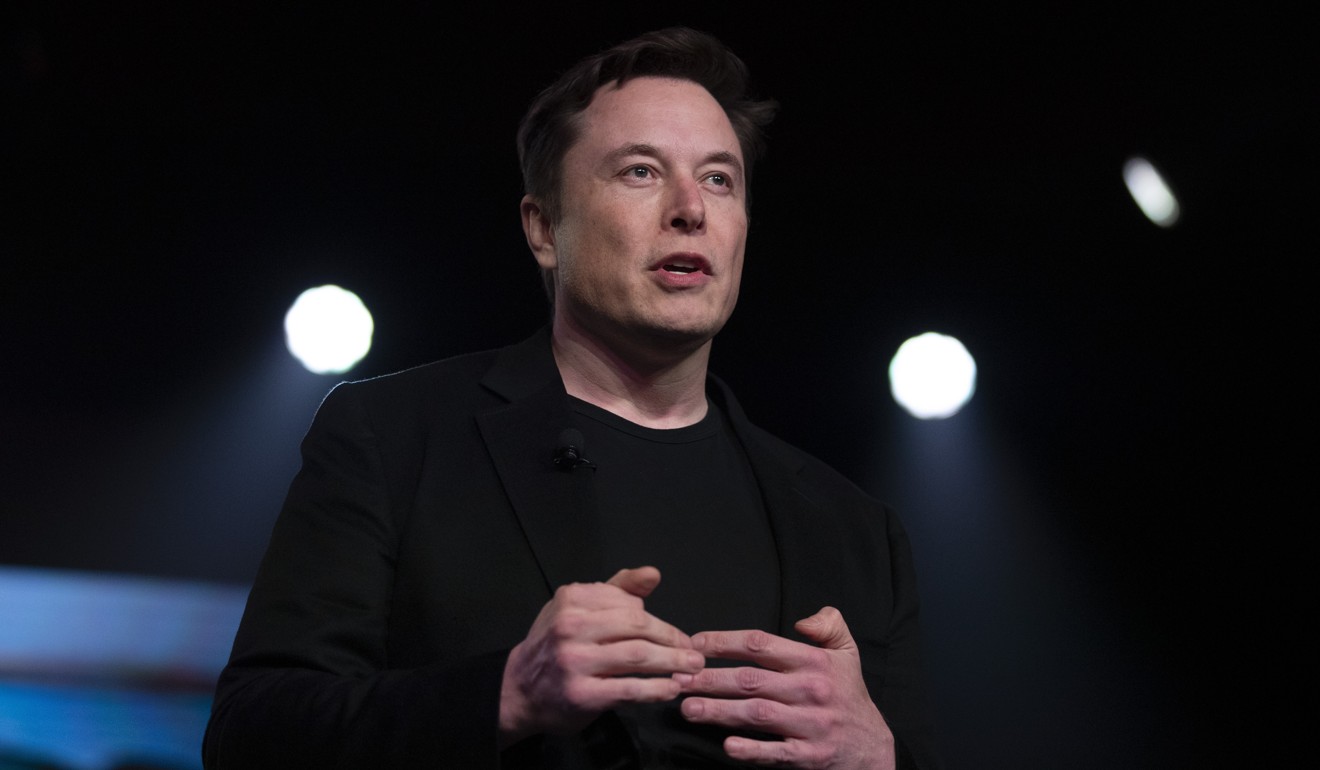
Mega constellations formed by Elon Musk’s SpaceX satellites could ruin our view of the night sky, warn astronomers
- The first 60 of an intended 12,000 Starlink probes were blasted into orbit last week
- The satellites, currently at an altitude of 450km (280 miles), are visible to the naked eye
Mega constellations of human-made satellites could soon blight the view of the night sky, astronomers warned after the launch of Elon Musk’s Starlink probes last week.
The first 60 of an intended 12,000 satellites were successfully blasted into orbit on Thursday by Musk’s company, SpaceX, which plans to use them to beam internet communication from space down to Earth.
Sightings of the procession of satellites trailing across the heavens, such as that posted online by the amateur astronomer Marco Langbroek, initially prompted excitement and astonishment. The spectacle was so bizarre that a Dutch UFO website was inundated with more than 150 reports from people suspecting an alien encounter was close at hand.
But for astronomers the initial excitement quickly gave way to dismay as they began to calculate the potentially drastic impact on people’s views of the cosmos.
“I saw that train and it was certainly very spectacular,” said Cees Bassa, an astronomer at the Netherlands Institute for Radio Astronomy. “With that comes the realisation that if several thousands of these are launched it will change what the night sky looks like.”
The Starlink satellites, currently at an altitude of 450km (280 miles), are still visible to the naked eye and take about five minutes to cross from one horizon to the other, meaning they appear at predictable times in a given location. It is not clear what their eventual brightness will be when they reach their operating orbit of 550km (342 miles) in the coming month.
“Everyone’s quite surprised by how bright they are,” said Darren Baskill, an astronomer at the University of Sussex. “I live on the outskirts of Brighton in light-polluted skies and I could easily see this line of satellites going across the sky.”
Responding to concerns on Twitter, Musk initially suggested that the satellites would be in darkness when the stars were visible.
SpaceX first commercial launch success: a Saudi satellite deployment
However, others disputed this, including Bassa who has done some preliminary calculations of the number of Starlink satellites likely to be visible to observers. Since the satellites are higher than the Earth’s surface they remain illuminated by sunlight after sunset here.
“My aim was to show people these satellites were going to be more visible than people said they would – among them Elon Musk,” Bassa said.
His estimates suggest that once the first 1,584 satellites are launched, for which the trajectories have already been made public, there will be about 15 satellites clearly visible above the horizon for three to four hours after sunset and before sunrise.

This means that in winter there would be several hours of the night during which no satellites would be visible. But in summer the satellites would be visible all night.
Once all the 12,000 satellites are launched (assuming they are placed in similar orbits) 70 to 100 would be visible at night during the summer months, Bassa calculates. “These mega constellations are going to add drastically to the number of satellites that are visible at any time,” he said.
Said Néstor Espinoza, an astrophysicist at the Max Planck Institute for Astronomy in Heidelberg: “It’s basically a private company staining our sky for everyone. It’s interesting that there’s no consensus about it. No one asked us.”
Planning on visiting space in 2021? Elon Musk will make this possible
SpaceX is just one of nine companies known to be working on global space internet, meaning the eventual number of satellites could be far in excess of this.
The satellites, in addition to changing the face of the night sky, could be problematic for professional astronomers, said Espinoza.
“We deal with satellites all the time. Whenever they come into your image you have to find ways to fix that. If you put 12,000 in the sky that will be a problem.”

Baskill said that the satellites, when in their final orbits, would probably appear fainter than the brightest 500 stars in the sky – although this is still uncertain. If that were the case, the real impact would be felt by astronomers and star gazers in remote areas, where between 1,000 and 2,000 stars can be seen.
“Even in the most remote dark places you won’t be able to hide from this constellation of satellites,” he said.
Musk later added that SpaceX was investigating ways to reduce the amount of light bouncing off the Starlink satellites.
“Sent a note to Starlink team last week specifically regarding albedo reduction. We’ll get a better sense of the value of this when satellites have raised orbits and arrays are tracking to sun.”

